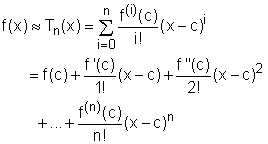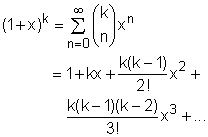| Ch 12. Infinite Sequences and Series | Multimedia Engineering Math | ||||||
|
Sequences and Series |
Integral and Comparison |
Alt. Series & Abs. Conv. |
Power Series |
Taylor, Mac. & Binomial |
|||
| Taylor, Maclaurin and Binomial Series | Case Intro | Theory | Case Solution |
| Chapter |
| 1. Limits |
| 2. Derivatives I |
| 3. Derivatives II |
| 4. Mean Value |
| 5. Curve Sketching |
| 6. Integrals |
| 7. Inverse Functions |
| 8. Integration Tech. |
| 9. Integrate App. |
| 10. Parametric Eqs. |
| 11. Polar Coord. |
| 12. Series |
| Appendix |
| Basic Math |
| Units |
| eBooks |
| Dynamics |
| Fluids |
| Math |
| Mechanics |
| Statics |
| Thermodynamics |
| ©Kurt Gramoll |
| |
||
Power series was introduced in the previous section. This section continues the discussion on the power series and focuses on specific types of power series such as the Taylor, Maclaurin and binomial series. |
||
| Taylor and Maclaurin Series |
||
|
An important theorem, which serves as the basis for the discussion of the Taylor series, is stated without the proof as follows: If a function f(x) is represented by a power series Substituting the coefficients back into the series yields This series is referred to as the Taylor series of a function f(x) centered
at c. As mentioned in the previous section, power series is important because they can be used to approximate functions arise in the fields of mathematics, science and engineering. A function f(x) can be represented using the partial sum of the series Tn(x) and the remainder term Rn(x) as f(x) = Tn(x) + Rn(x) Some of the common functions, which can be represented using the Taylor or Maclaurin series, are summarized as follows: |
|
| Binomial Series |
||
Another common series is the binomial series, which has the following
form: where k is any real number, Note that the binomial series converges when |
||
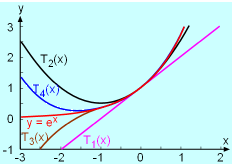
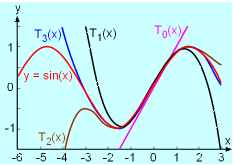
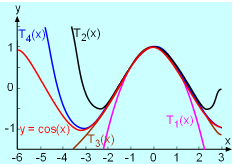
 with
a radius of convergence of R > 0, the coefficients are given by
with
a radius of convergence of R > 0, the coefficients are given by

